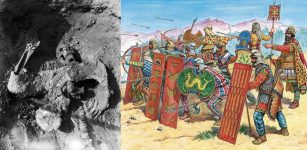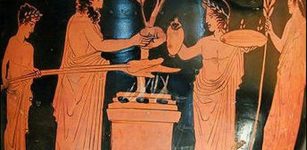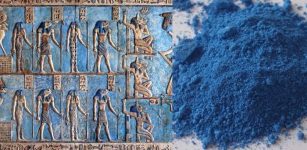Saturnalia Feasts In Roman Empire
MessageToEagle.com – Saturnalia feasts were established in honor of Saturn. They were the result of the merging of three winter festivals over the centuries. This holiday included the day of Saturn – the god of seeds and sowing – which was the Saturnalia itself.
Saturnalia began as a farmers’ festival to mark the end of autumn planting, in honour of Saturn, who was a god of agriculture. The first Saturnalia was in 497BC when the Temple of Saturn in Rome was dedicated. As with so many Roman traditions, the origins of the Saturnalia are lost to the mists of time.
The dates for the Saturnalia shifted a bit over time, but it was originally held on 17 December.

Later, the 17th was given over to the Opalia, a feast day dedicated to Saturn’s wife – who was also his sister and the goddess of abundance and the fruits of the earth.
Because they were associated with heaven (Saturn) and Earth (Opalia), their holidays ended up combined, according to Macrobius, a Roman Latin grammarian and philosopher, who flourished AD 400 and whose most important work is the “Saturnalia”, a compendium of ancient Roman religious and antiquarian lore.

The third one, was a feast day celebrating the shortest day, called the bruma by the Romans. The Brumalia coincided with the solstice, on 21 or 22 December.
These three were merged, and became a seven-day jolly running from 17–23 December. But the emperor Augustus [who ruled from 27 BC–AD 14] shortened it to a three-day holiday, as it was causing chaos in terms of the working day.
Later, Caligula who ruled AD 37–41, extended it to a five-day holiday, and by the time of Macrobius it had extended to almost two weeks.
MessageToEagle.com
Expand for referencesRelated Posts
-
 Ancient Persians Were Familiar With Chemical Warfare 2,000 Years Ago
No Comments | May 3, 2016
Ancient Persians Were Familiar With Chemical Warfare 2,000 Years Ago
No Comments | May 3, 2016 -
 What Rights Did Viking Women Have?
No Comments | Mar 20, 2021
What Rights Did Viking Women Have?
No Comments | Mar 20, 2021 -
 Did The Ancient Trojan Horse Really Exist?
No Comments | Aug 19, 2015
Did The Ancient Trojan Horse Really Exist?
No Comments | Aug 19, 2015 -
 Florentine Codex: Remarkable Manuscripts About Life Of The Aztecs
No Comments | Nov 15, 2016
Florentine Codex: Remarkable Manuscripts About Life Of The Aztecs
No Comments | Nov 15, 2016 -
 Great Easter Traditions Passed Down Over Centuries And Widely Practiced
No Comments | Mar 25, 2016
Great Easter Traditions Passed Down Over Centuries And Widely Practiced
No Comments | Mar 25, 2016 -
 How Did Native American Indian Chiefs Get Their Names?
No Comments | May 27, 2016
How Did Native American Indian Chiefs Get Their Names?
No Comments | May 27, 2016 -
 Ancient Chinese Invented The Umbrella
No Comments | Jan 21, 2016
Ancient Chinese Invented The Umbrella
No Comments | Jan 21, 2016 -
 What Was The Role Of The Priests And Priestesses In Ancient Greece?
No Comments | Jul 27, 2016
What Was The Role Of The Priests And Priestesses In Ancient Greece?
No Comments | Jul 27, 2016 -
 Egyptian Blue: World’s Oldest Artificial Pigment
No Comments | Feb 6, 2016
Egyptian Blue: World’s Oldest Artificial Pigment
No Comments | Feb 6, 2016 -
 Buccaneers And Privateers Were Pirates – But What’s The Difference Between Them?
No Comments | Nov 5, 2016
Buccaneers And Privateers Were Pirates – But What’s The Difference Between Them?
No Comments | Nov 5, 2016
